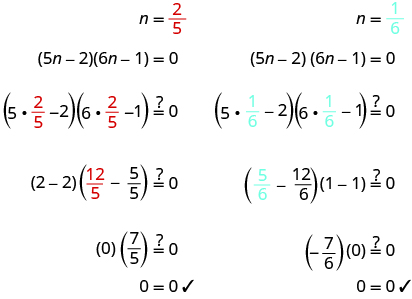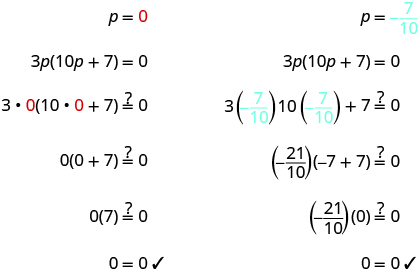| << Chapter < Page | Chapter >> Page > |
Before you get started, take this readiness quiz.
We have already solved linear equations, equations of the form . In linear equations, the variables have no exponents. Quadratic equations are equations in which the variable is squared. Listed below are some examples of quadratic equations:
The last equation doesn’t appear to have the variable squared, but when we simplify the expression on the left we will get .
The general form of a quadratic equation is .
An equation of the form is called a quadratic equation.
To solve quadratic equations we need methods different than the ones we used in solving linear equations. We will look at one method here and then several others in a later chapter.
We will first solve some quadratic equations by using the Zero Product Property. The Zero Product Property says that if the product of two quantities is zero, it must be that at least one of the quantities is zero. The only way to get a product equal to zero is to multiply by zero itself.
If , then either or or both.
We will now use the Zero Product Property , to solve a quadratic equation.
We usually will do a little more work than we did in this last example to solve the linear equations that result from using the Zero Product Property.
Solve: .
| Use the Zero Product Property to set
each factor to 0. |
||
| Solve the equations. | ||
| Check your answers. | ||
 |
Notice when we checked the solutions that each of them made just one factor equal to zero. But the product was zero for both solutions.
Solve: .
| Use the Zero Product Property to set
each factor to 0. |
||
| Solve the equations. | ||
| Check your answers. | ||
 |

Notification Switch
Would you like to follow the 'Elementary algebra' conversation and receive update notifications?